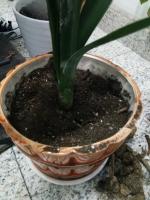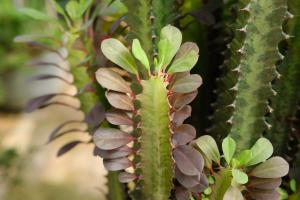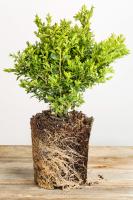Understanding How Vascular Plants Conserve Water
Vascular plants are unique among living organisms as they possess specialized tissues that transport water and nutrients in the body. However, the availability of water can pose a significant challenge to their survival. To cope with the changing environmental conditions, vascular plants have developed various adaptations that help them conserve water. In this article, we will explore some ways that vascular plants conserve water to understand their strategies for survival.
Structure of Vascular Plants
The structure of vascular plants consists of two major parts: roots and shoots. The roots are responsible for absorbing water and minerals from the soil, while the shoots include the stem, leaves, and reproductive structures. The water absorbed by the roots is transported through specialized tubes called xylem to the rest of the plant. The leaves, which are essential for photosynthesis, are designed to conserve water by minimizing water loss through transpiration.
Adaptations to Conserve Water
Vascular plants have evolved various adaptations to conserve water in various environmental conditions. Some of the most common adaptations include:
Root Adaptations
Deep Roots: Plants in arid regions tend to have long roots that can reach deep into the soil to access water from underground sources.
Succulent Roots: Some plants, such as cacti, have specialized roots that store water for future use.
Shoot Adaptations
Reduced Leaf Size: In arid regions, plants may have smaller leaves to reduce the surface area available for transpiration.
Thick Cuticles: The leaf surfaces of some plants have a thick waxy layer called cuticles that helps reduce water loss through evaporation.
Dense Hairs: Some plants have dense hairs on their leaves that help reduce water loss by creating a humid microclimate around the leaf.
Behavioral Strategies
Vascular plants also have behavioral strategies to conserve water. They close their stomata during the hottest parts of the day to reduce water loss through transpiration. They also engage in partial or complete dormancy to conserve water during prolonged periods of drought.
Conclusion
Vascular plants have developed a range of adaptations to conserve water and survive in changing environmental conditions. These adaptations include structural, morphological, and behavioral strategies that are essential for their survival in arid environments. Understanding how vascular plants conserve water can help us better appreciate their resilience and adaptability in the face of environmental challenges.

 how many times do yo...
how many times do yo... how many planted tre...
how many planted tre... how many pine trees ...
how many pine trees ... how many pecan trees...
how many pecan trees... how many plants comp...
how many plants comp... how many plants can ...
how many plants can ... how many plants and ...
how many plants and ... how many pepper plan...
how many pepper plan...
































